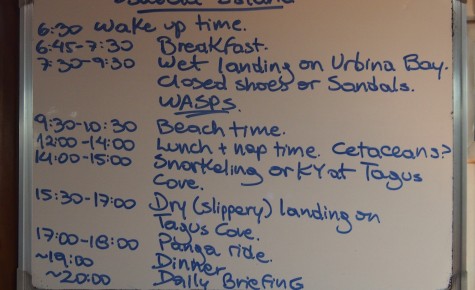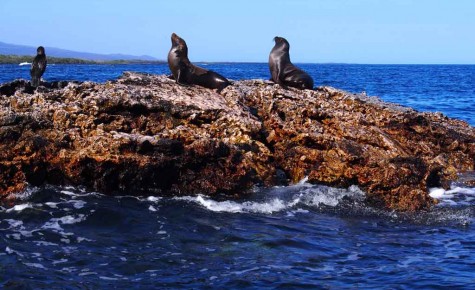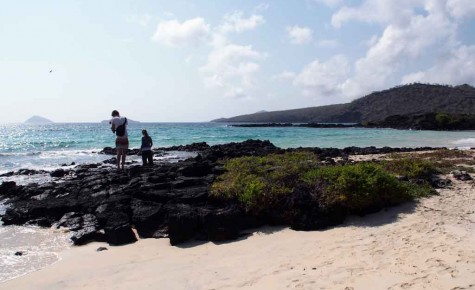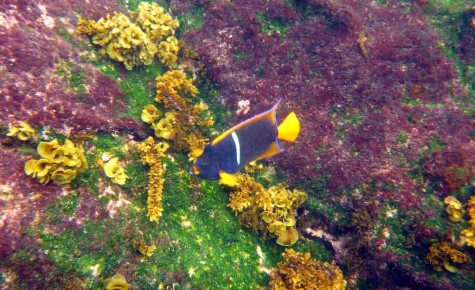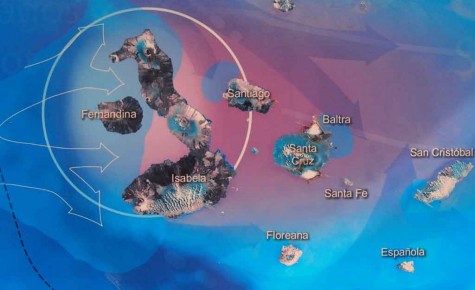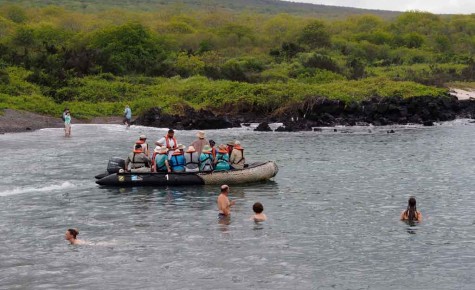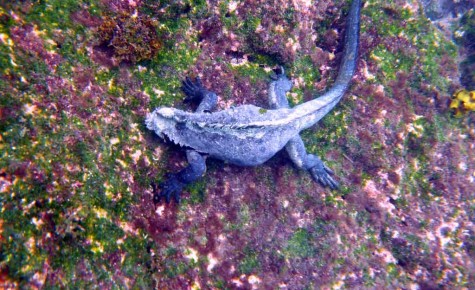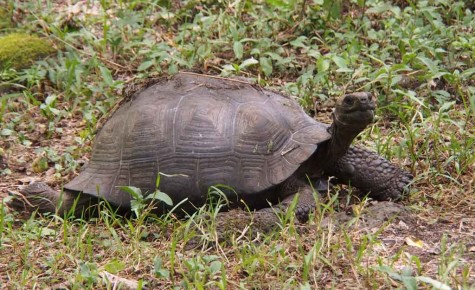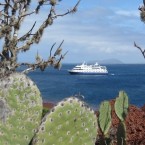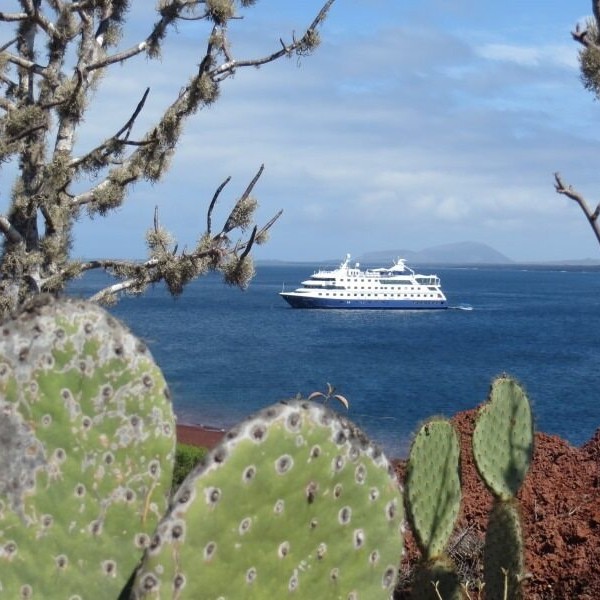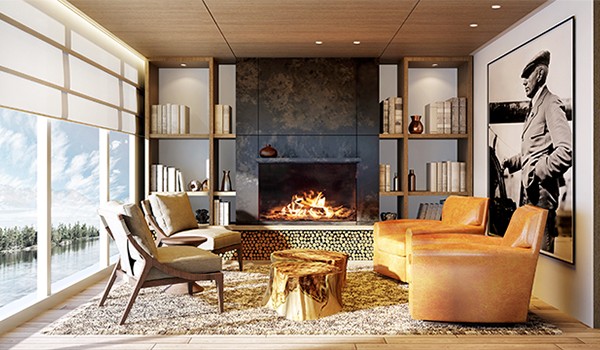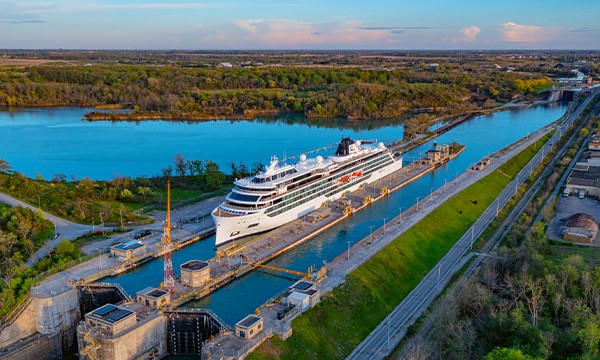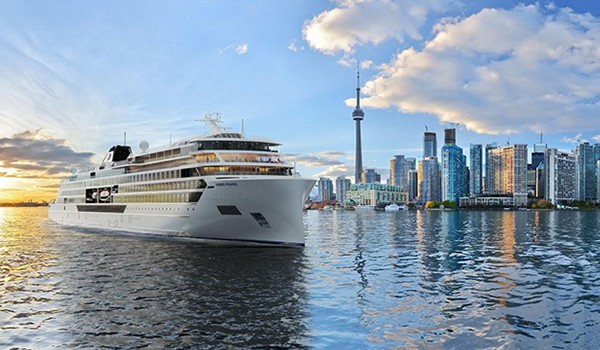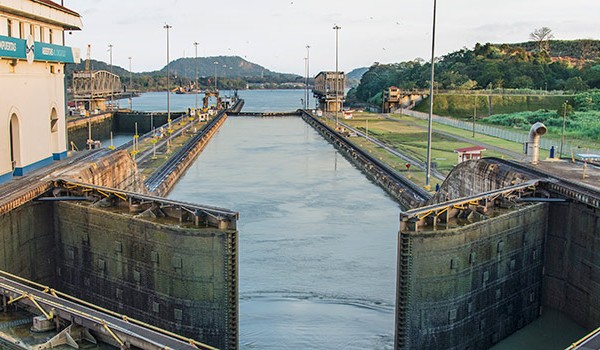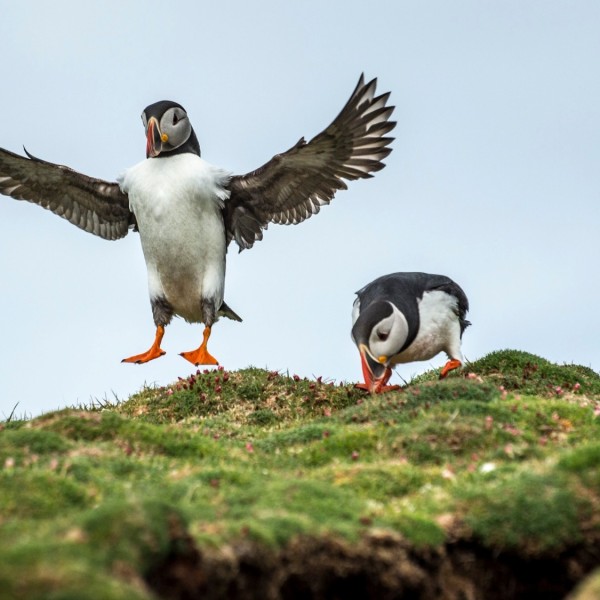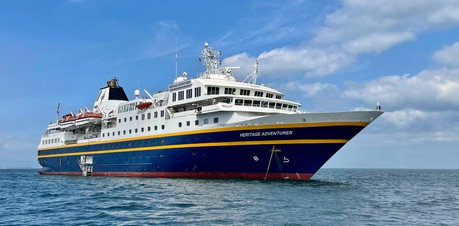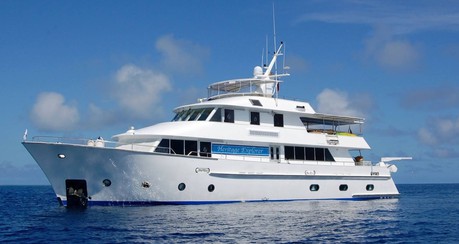Being a huge fan of wildlife viewing, the Galapagos has been high on my wish list for many years. I finally got there this April and have to say it is a truly amazing experience, second only to being on safari in Africa. The snorkelling experiences were utterly outstanding!
I was on a small boat with just a maximum of 16 guests (as the guide ratio is 16:1) and I did the 8 day (7 night cruise) Fernandina Itinerary. This itinerary visits the Western Islands which are renowned for active volcanoes and diverse wildlife.
My cruise was very busy – just check out my photo of the daily activities. You don’t have to do everything, but when you are there it is all so enticing you probably won’t want to miss anything! Below are the activities and highlights of each day.
Day 1 – Santa Cruz Island – On our arrival day into Baltra Island on Santa Cruz Island our very first activity was a stroll through the highlands where we very quickly found the Galapagos Giant Tortoises. A real highlight and a great way to start the trip watching these giants munching delicately on the grasses and clambering through mud puddles. We then went to the Charles Darwin Station where they have a Giant Tortoise and Land Iguana breeding program and interpretation centre. Seeing hundreds of tiny giant tortoises in the training pens was very cute – they were constantly climbing over each other and falling down. The brilliant yellow and orange colours of the iguanas was amazing.
Day 2 – Floreana Island. This island is best known for its colourful history of buccaneers, whalers, convicts, and early colonists. This was a great day. We walked to a beautiful beach that had huge turtle nesting holes and a most inviting beach – no swimming however as home to very large stingrays. We then walked to a large inland lagoon where we saw pink flamingos. Then we snorkelled an area that is a completely submerged volcano that has eroded to create the appearance of a jagged crown and swam with turtles and sea lions. This was the day that we also got to swim with hammerhead sharks!
This afternoon another walk including climbing down into a lava tube and spotting a sleeping owl. Following this we visited Post Office Bay – this is one of the few sites visited for its human history. We visited the wooden mail barrel where letters are dropped off and picked up and also the remains of the Norwegian fishing village. We divvied up the postcards in the barrel with everyone take home (to on post) those addressed to near them (as the only Kiwi’s we had to take all the cards being sent to NZ and Aus!) and left our own postcards for the next visitors to post. We then swam at this gorgeous beach, avoided standing on the little stingrays in the water and watched a few wading birds.
Day 3 – Isabela Island is the largest of the Galapagos Islands (the one that looks like a seahorse) formed by five active volcanoes fused together. Wolf Volcano is the highest point in the entire Galapagos at 1707m.
We start our day with a short visit to Tintoreras – this is a tiny black volcanic island that has a lagoon which is home to white tipped sharks. It had also what looked like a day care for small Marine Iguanas – there were thousands of them – climbing on each other and all spitting wildly (getting rid of the salt). We then visited the town of Puerto Villamil and boarded an open bus to head up into the mountain so that we could get some proper exercise with a hike up the Sierra Negra Volcano. The highland vegetation was very green and we had a quite overgrown track at times. On reaching the caldera we were amazed at the size – it has a diameter of 10km. It was very cloudy at the top so viewing was restricted but we could clearly see the enormous recent lava flows and parasitic cones colliding with the dense highland vegetation. Stunning!
We then had a stroll through Puerto Villamil, a charming small town set on a white sand beach. The blokes played a game of football with the locals and the rest of us relaxed at the beach (and skipped the Tortoise Breeding Station visit).
Day 4 – Still on Isabela Island in the central southwestern coast. Today started with a Panga ride (zodiac) to Punto Moreno where we are to hike across these impressive lava flows with a very desolate landscape. In the midst of our walk we glimpse an oasis of green and come across a salt water lake that is home to around six flamingos. Stunning! Black lava, bright green vegetation and beautiful bright pink flamingos!
Back to the boat and time for our snorkeling – we are all on a mission to find a seahorse and we are given the odds of 5% chance. After much searching (not 100% sure what I am looking for), I find a tiny orange seahorse clinging to some vegetation and floating back and forth in the tide below me. Note! It is surprisingly difficult when snorkelling to attract attention of the rest of the group whilst not losing sight of a 6 inch high seahorse being buffeted around by the sea! This was a great snorkel, we saw a huge variety of colourful fish and we swam with curious turtles and watched them and the marine iguanas grazing on the bottom – the seahorse was pretty special though.
Back on the boat for lunch and naptime is interrupted to view dolphins racing and playing alongside us. Then it is out for an afternoon Panga ride on Elizabeth Bay: A great trip as the bay has lots of tiny islands and the end of the bay is surrounded by mangroves. We saw penguins darting around, Galapagos Sea Turtles, plenty of rays (spotted and paperbag ones), sea lions and lots of birds. Got back to the boat at sunset so only fitting to have cocktails out on deck.
Day 5 Still on Isabela Island. Today we visit Urbina Bay for a walk to find the colourful land iguanas and Galapagos Giant Tortoises – in the wild. They are both in abundance and very uninterested in us so we get some great viewing. Wonderful flora to see on the walk as well. This afternoon we have a snorkel, a panga ride and a walk at Tagus Cove. This is a natural harbour where centuries ago whalers and pirates left their ship’s names painted or carved on the rocks (these days we would call it Grafitti!). Our walk takes us up to the top to look down over Darwin’s Crater salt-water lake – great 360 degree views and much debate about the level of the lake (actually level with the sea).
Day 6 Fernandina Island is the youngest volcanic island and is still active so there are wonderful lava patterns along the shoreline at Punta Espinoza. We saw thousands of marine iguanas lazing here, spitting and climbing over each other. I adore their spiky crowns. Various cacti are growing out of the lava and we see the flightless cormorant, Galapagos penguin and a few lazy sea lions who entertain us in the crystal clear water.
Isabela Island – Punta Vicente Roca We enjoyed magnificent snorkelling this day – swimming with both turtles and marine iguanas as well as watching them feeding on the grasses on the sea bottom. On our zodiac ride around the water’s edge of the high cliffs we had great viewing of Nasca boobies, blue-footed boobies and flightless cormorants who were perched along the shoreline and around the partially sunken cave. The land formation in this bay is absolutely stunning!
Day 7 James (Santiago) Island / Bartolome Island This Island is located between Isabela and Santa Cruz Islands. We had a great walk along the rocky coast line checking out the tide pools and saw brightly coloured crabs, fur seals, oystercatchers, a huge marine iguana colony, and an old salt mine.
Bartolome Island: There is a beautiful sandy beach where we all had a lovely swim then headed off around the point for some outstanding snorkelling with the highlight being white tipped sharks at very close quarters. We then had a great hike, mostly on a boardwalk so pretty easy even though it does look like a moonscape. The view from the top of the two curved beaches with the volcanoes in the background is spectacular.
Day 8 North Seymour Island – Our cruise comes to an end this morning, but a very early morning walk rewards us with colonies of blue-footed boobies, swallow tailed gulls, and magnificent frigate birds.
A most perfect week!
The Nitty Gritty – what you need to know:
- 7 night or longer cruises are best – stretch your budget as much as you can. Shorter cruises visit less remote areas and you have less wildlife. 3 or 4 days is just not long enough and it is a long (and expensive) way to go back!
- Be prepared for a very busy itinerary
- Snorkelling gear is provided (but if you are really keen and need glasses consider getting a prescription mask)
- ¾ Wetsuits are provided at a nominal cost (in April and May hardy swimmers could get away without one)
- On the smaller boats you need to be agile enough to easily get on and off the zodiac at the boat and on beaches. If you have mobility issues consider a larger boat (ie National Geographic or Santa Cruz)
- Take a few swimsuits as we often snorkelled/swam twice or more a day
- You don’t need to take a beach towel
- Take lots of sunscreen – you will need it, especially snorkeling.
- Dress code is very casual – mostly just shorts and t-shirts. Covered reef shoes were popular and you need some lightweight walking shoes for the lava fields. They do tell you in advance if you are getting your feet wet. Jandals are great on the boat.
Best time to go: April and May have the warmest water and weather but the cruises operate year round.





